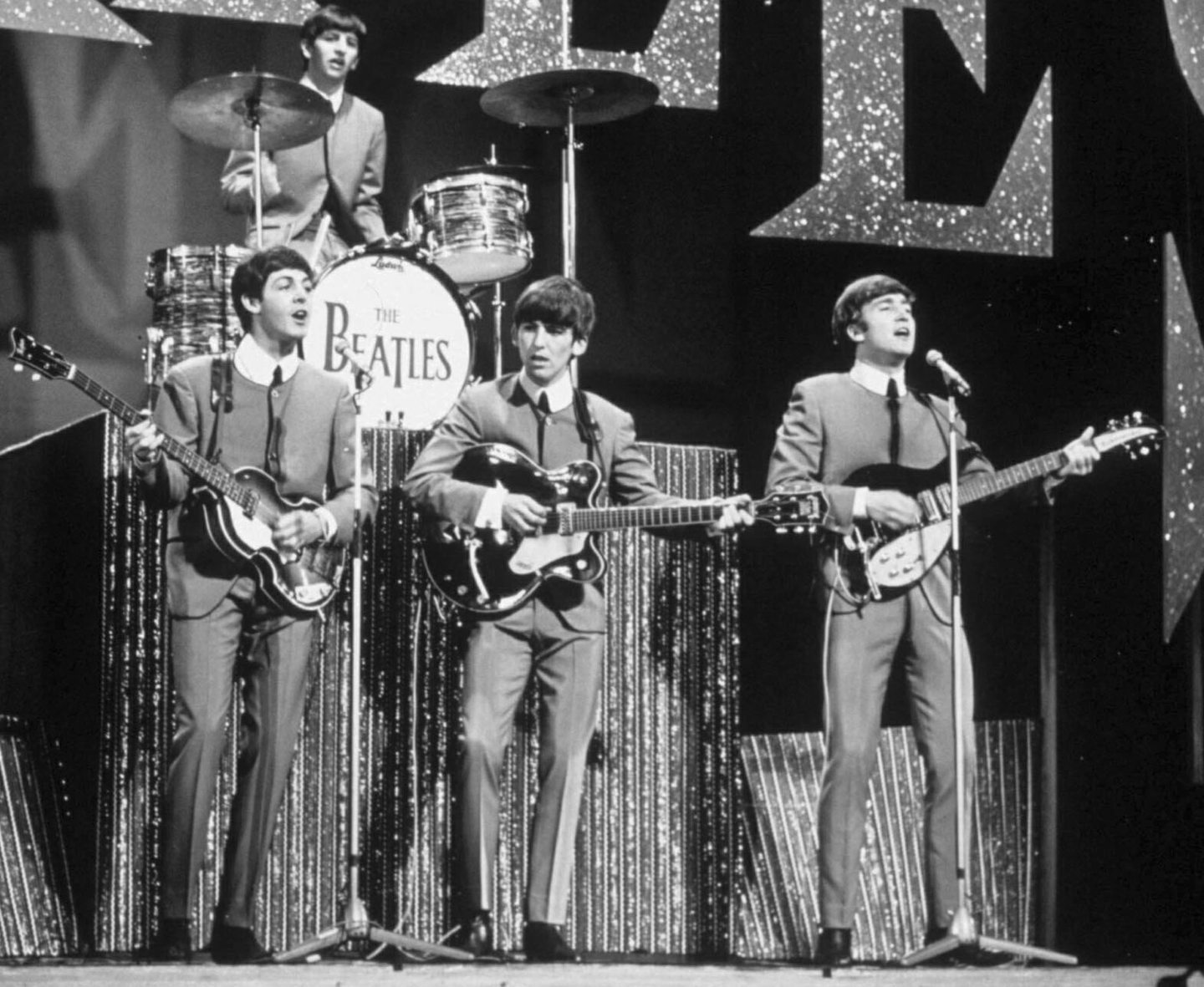I very much doubt I was the only person blinking back tears as I listened to the radio on Thursday afternoon.
Shortly after 2pm, both BBC Radios 2 and 6 premiered what has been described as the last Beatles song. In less than a minute, I’d lost it.
There will be those with the critical faculties to pick through the merits of Now And Then, a track based on a fuzzy little demo recorded by John Lennon as he sat at his piano in his New York apartment in the late 1970s.
I am not among their number. When it comes to The Beatles, I have long since lost the ability – and, indeed, the desire – to criticise.
For what it’s worth, I love this final farewell from The Beatles, made possible by technology that enabled the separation of Lennon’s vocal and piano, allowing McCartney and Starr – along with producer Giles Martin – to build a new track from the ground up. I’m moved to hear that fragile Lennon vocal and when McCartney’s newly recorded harmonies join his old friend’s voice, I feel a discombobulating mix of elation and sadness.
It’s a joy to hear George Harrison’s rhythm guitar, recorded in 1995, six years before his death, and new playing from Ringo Starr – the greatest drummer in rock ‘n’ roll history, despite the claim to the contrary frequently made by intensely boring men – is yet more cause for celebration.
I was born in January 1970, just a few weeks before news of The Beatles’ split was made public. But, though they were gone by the time I was old enough to pay attention to music, they were the first pop group of which I was aware.
I daresay the same could be said for many of you.
Growing up, every house I visited seemed to have, filed beside the hi-fi system, those red and blue compilations.
The first album I chose to play at home was the copy of A Hard Day’s Night which my mother had received on her 21st birthday. Seven years after her death, I continue to spin that album and it’s more than just music, it’s a portal through which I can connect with her again.
I wonder whether their ability to connect generations is what gives The Beatles a special place in our culture
Likewise, when I play the copies of Revolver and Rubber Soul picked up in a second-hand shop by my father during a business trip – “I thought these were the ones you needed,” he told 15-year-old me – I’m sure I can feel his presence in the room, 21 years after his passing.
I wonder whether their ability to connect generations is what gives The Beatles a special place in our culture. A mate and his teenage daughter spent much of the school run during her sixth year listening – at her instigation – to The White Album, bonding over favourite tracks. And The Beatles are one of the few bands whose music I can play around the flat without the boy (racing towards 14 and enthusiastically embracing the pleasures of having, and bluntly sharing, opinions) rolling his eyes.
Countless moments of brilliance
Back in September 2014, I took a call from a member of staff at 10 Downing Street. He was excited that the Better Together campaign had signed up “the best possible supporter. Someone absolutely everyone loves”. He couldn’t tell me any more, he said, but when I found out who he was talking about, I’d be impressed.
“It’s McCartney,” I told him.
He was horrified. How did I know? Who’d leaked to me?
Nobody had leaked, I told him. It was pretty straightforward. If he was going to tell me the pro-UK campaign had won the endorsement of the single most unifying living Brit, I was going to assume he was talking about Paul McCartney.
Who knows whether Now And Then truly will be the last Beatles song? The technological advances that allowed its creation will have been surpassed mere months from now. It’s entirely plausible that other abandoned or half-finished tracks could be brought to life.
But, for now, Now And Then is a moving coda to a musical legacy that sparkles, to this day, with countless moments of brilliance.
I’ve listened to the last Beatles song half a dozen times now, and I’ll be playing it over and over in the days to come. And, when I do, I’ll feel closer to those I’ve lost. I’m sure many of you will, too.
How lucky we are to have The Beatles’ music in our lives.
Euan McColm is a regular columnist for various Scottish newspapers


Conversation